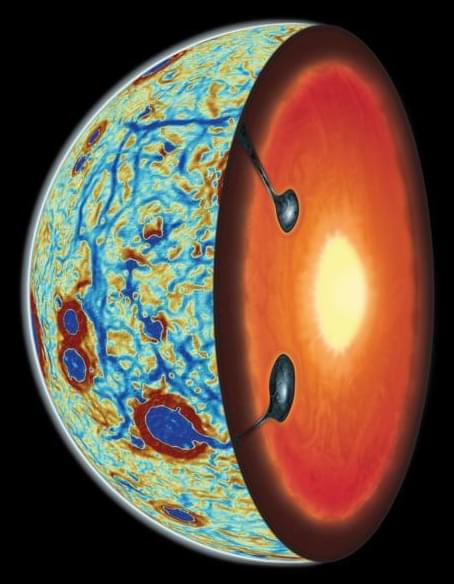“For the first time we have physical evidence showing us what was happening in the moon’s interior during this critical stage in its evolution, and that’s really exciting,” said Dr. Jeff Andrews-Hanna.
Our Moon has long been hypothesized to have formed from a planet-sized object colliding with the Earth. But, what happened after and how can its unique geologic exterior and interior be explained? This is what a recent study published in Nature Geoscience hopes to address as an international team of researchers led by the Lunar and Planetary Laboratory (LPL) at the University of Arizona used a combination of spacecraft data and computer models to investigate the geologic processes that led to heavier elements being present on the nearside of the Moon, which is constantly facing Earth due to being tidally locked with our planet. This study holds the potential to help researchers better understand the geologic mechanisms behind planetary formation and could lead to gaining greater insight into how rocky planets like Earth and Mars formed.
For the study, the researchers used data from NASA’s GRAIL mission, which was used to map gravitational anomalies on the Moon, and computer models to determine the distribution of ilmenite, a combination of titanium and iron, across the Moon’s nearside and how much sunk into the Moon’s interior during the Moon’s formation and evolution. It has been previously hypothesized that while ilmenite sunk to the Moon’s interior early on, portions of it returned to the surface from volcanism, and the mechanisms behind these events have led scientists puzzled.










If you were around and looked up at the Moon 2 billion years ago or so, you would have seen a completely different satellite from the one that orbits Earth now. For starters, the Moon was far closer to the planet than it is nowadays. Around 2 billion years ago, the Moon was about 60,000 kilometers\40,000 miles away from the Earth,which is less than twice as high as geostationary orbit (which is around 35,785 km\22,230 mi up). Secondly, the Moon was geologically active at the time, so you probably would’ve seen a few volcanic eruptions on the Moon. A lunar atmosphere would have also likely been visible (yes, evidence suggests Luna had a somewhat thick atmosphere 2 billion years ago), which means clouds could have been visible around the Moon!